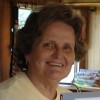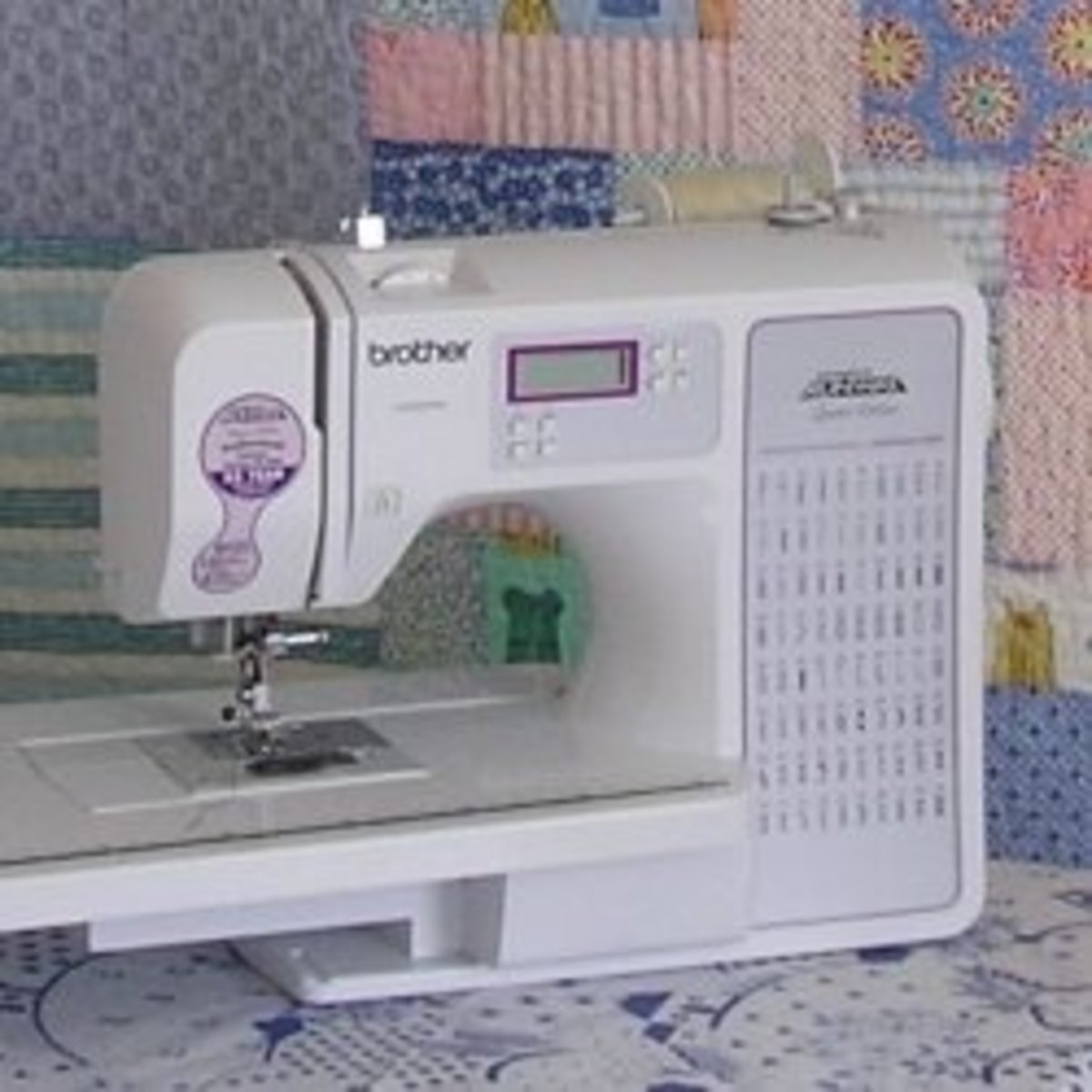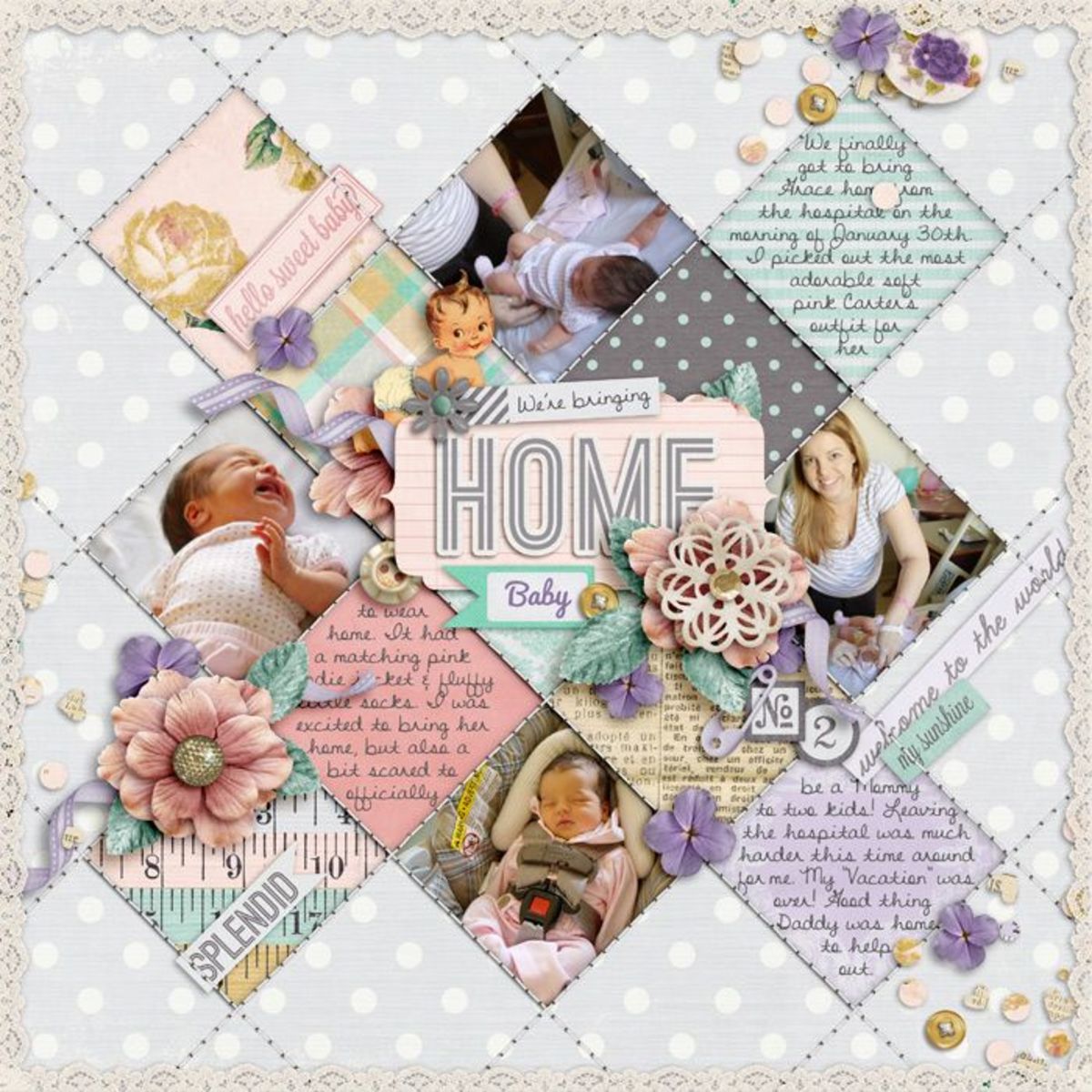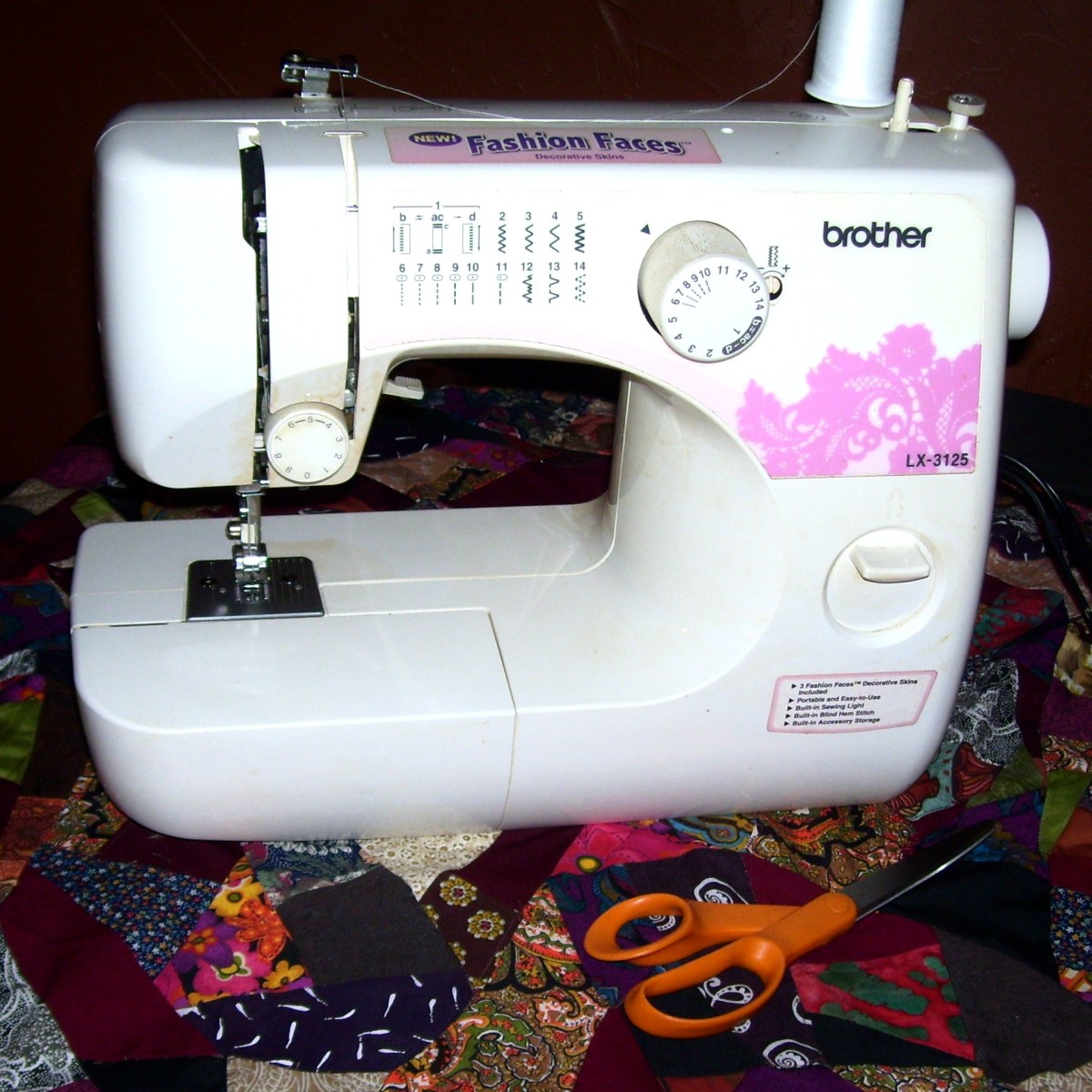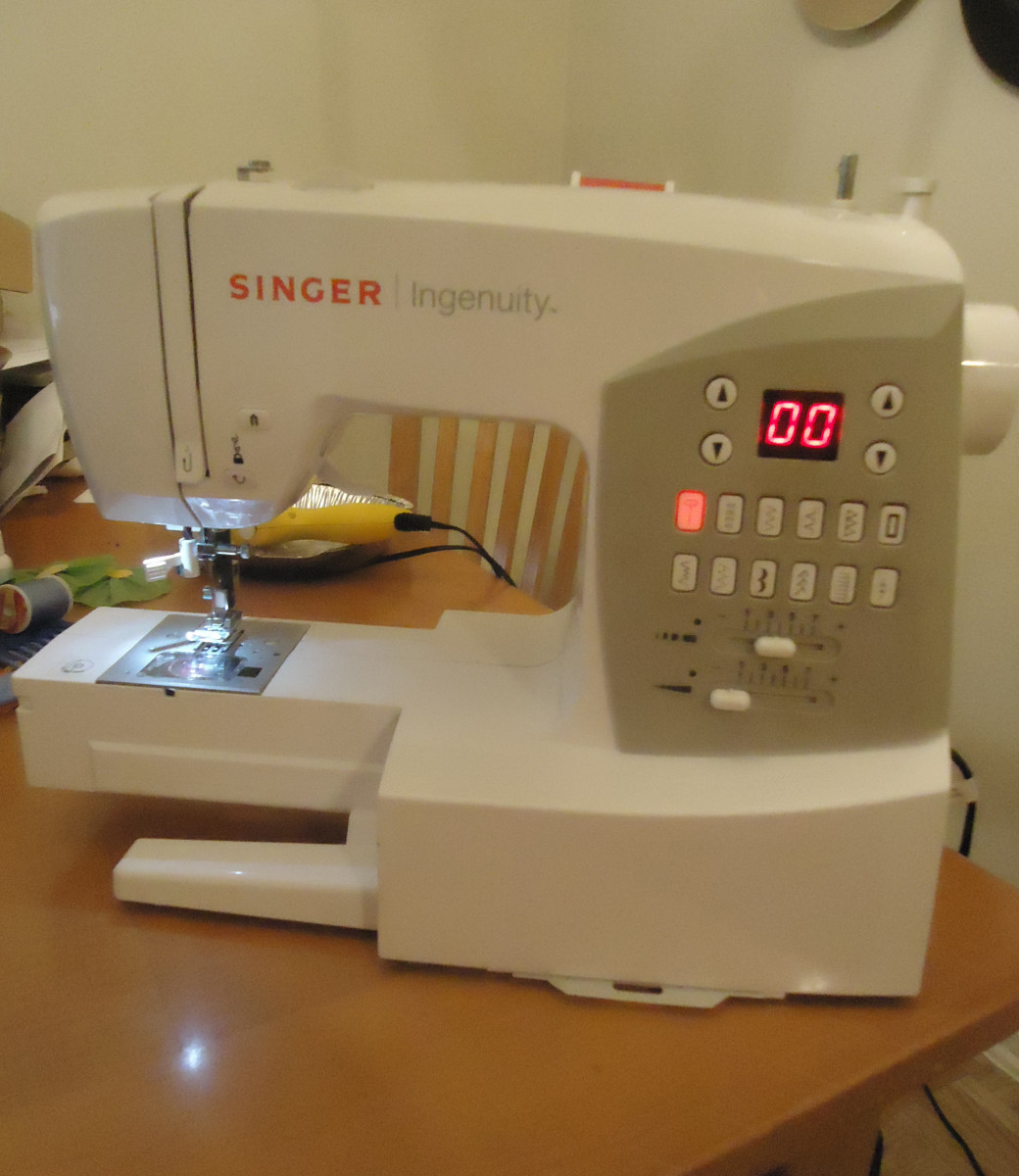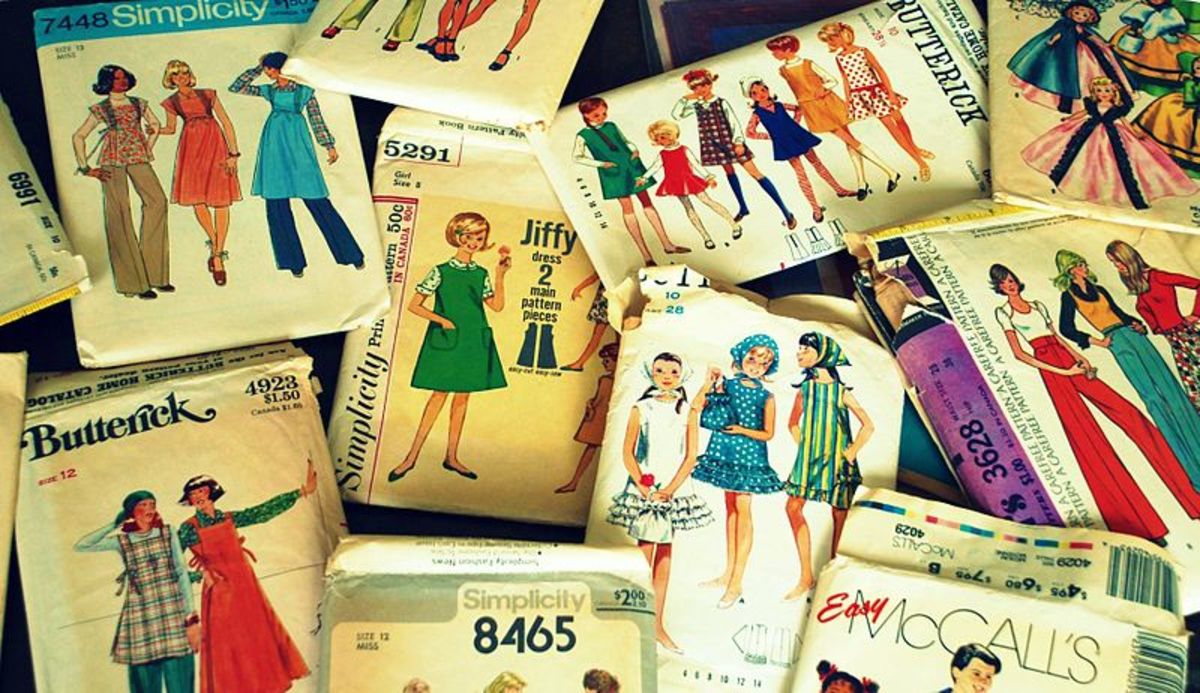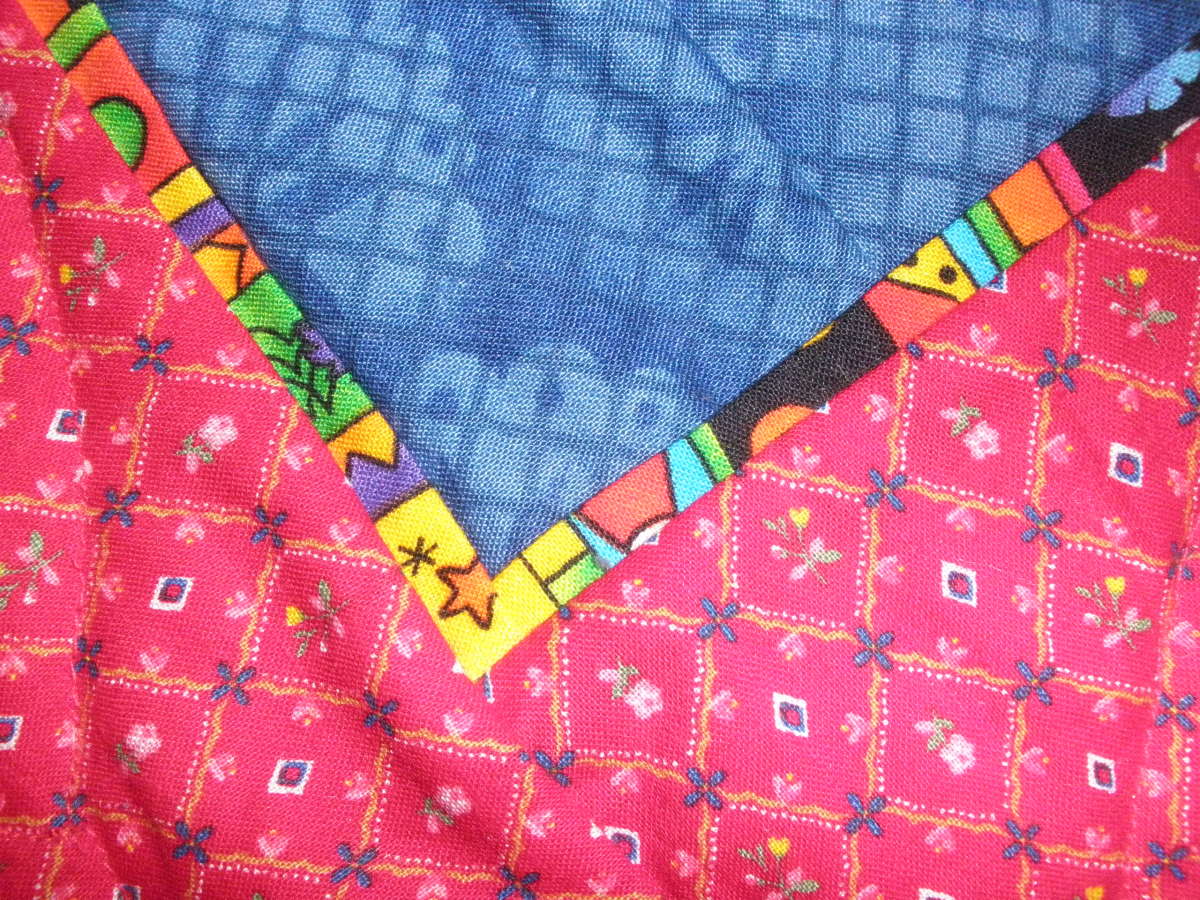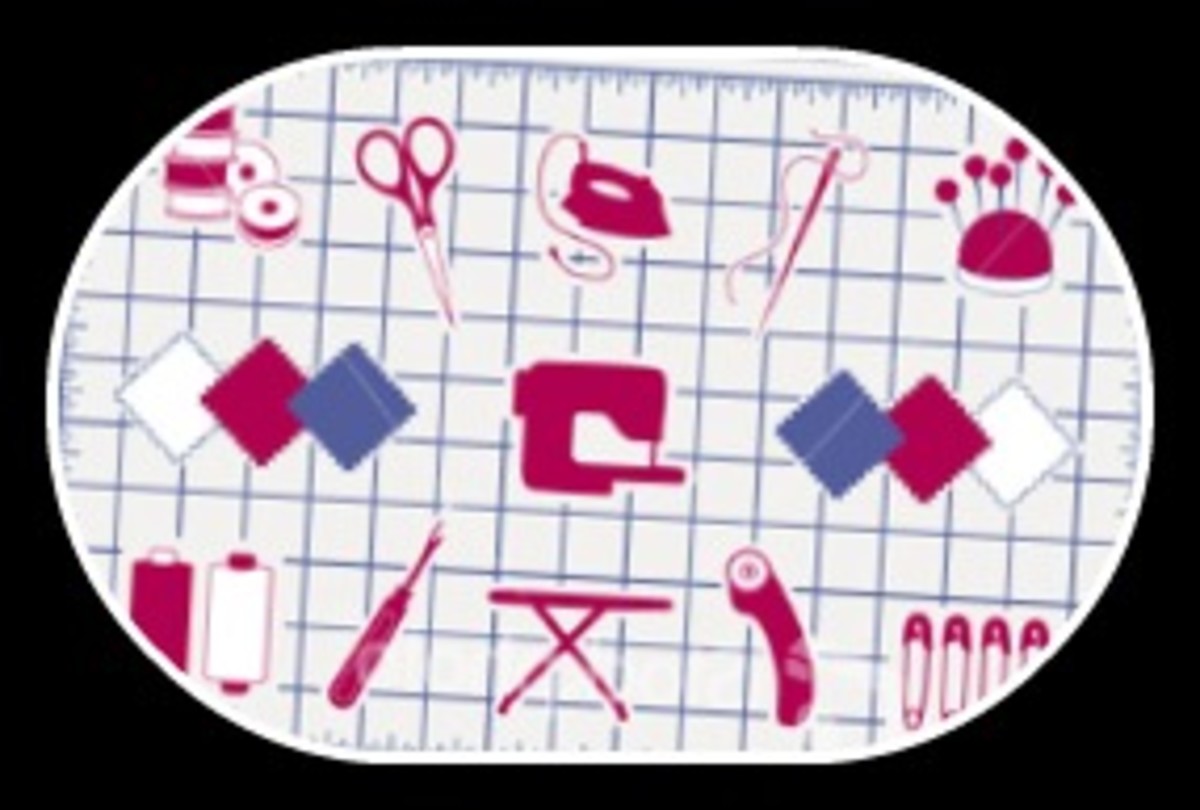What Patchwork Quilters Need in a Sewing Machine
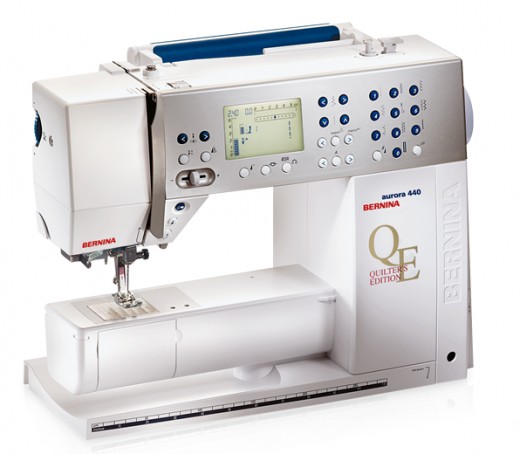
How to Choose the Ideal Sewing Machine for Quilters
Going to buy a new sewing machine to make patchwork quilts?
Not sure which one is best?
Everyone you ask will tell you a different brand, but I am going to tell you what the essential features are that mean you can make great quilts in the easiest way possible.
Pictured is my beloved Bernina Quilters Edition 440.
Essential Features of A Patchwork Quilting Machine
These are the features you need to look for in your new sewing machine for patchworking:
- the capability to stop with the needle down
- be able to drop the feed dogs
- have 3 specialty patchwork and quilting feet (or be able to buy them later)
- a wide attachable flatbed table
- optional, but not essential: a wide throat
1. Needle stop down
Two reasons it is an essential feature
- Firstly, when you are patchworking, if you stop sewing and the needle is up, you might shift the patches, spoiling your accuracy.
If the needle is down, the patches stay put, and you can start sewing again knowing that your seam has not moved.
- Secondly, when you are free machine quilting, the feed dogs are (usually) down and you are manipulating the work under the foot.
Having the needle stop down in the work allows a quiltmaker to manipulate the fabric/quilt without movement from needle.
As you need to stop, if the needle is not down in the work when you restart, it may jump to a different spot making unsightly stitching.
If your machine doesn't have this feature, can you put the needle down into the work before you take your hands away?
If you remember, this works!
2. Able to drop the feed dogs
This is a Must for Free Machine Quilting
Although it is possible to free machine quilt with the feed dogs up, much better results come when the dogs are down.
Some sewing machines come with a cover for the feed dogs, and, provided that the quilting foot clears the cover when the fabric is under the needle, you will be able to free machine quilt.
It is also possible to quilt on some machines without covering the feed dogs.
3. Most Important Feet You Need
For Patchwork and Quilting
Three machine feet are essential equipment in a quiltmaker's arsenal.
They are:
- a ¼ inch foot
- a walking foot
- a free machining (or darning) foot
Bernina Foot #57
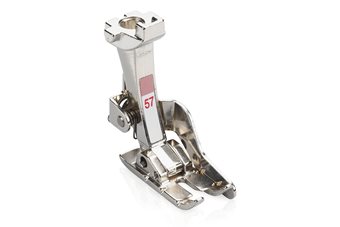
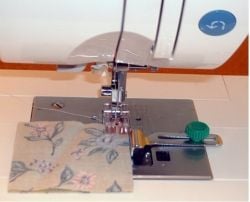
3-1. 1/4 Inch Foot
Used to achieve accurate piecing
A ¼ inch patchwork foot is essential for accurate piecing in template free quiltmaking.
Because many quilters use rotary cutting techniques these days to make their quilts, an accurate seam is mandatory.
When patches are cut using template free rotary cutting, the seam allowance is already added, and is ¼ inch all around the patch.
When you are sewing the patches together, it is essential that you use an accurate ¼ inch seam, otherwise the patches won't fit together properly.
You can use a universal sewing foot, with a seam guide attached (pictured) if a patchwork foot is not available for your machine.
My ideal foot for perfect ¼ inch seams has a flange on the side closest to the neck of the machine, which helps you guide the fabric at the edge to keep the seam accurate.
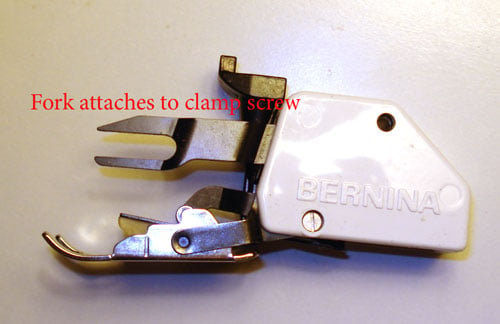
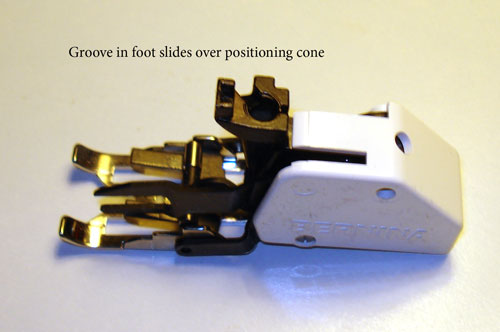
3-2. Walking foot
Sometimes Called an Even Feed Foot
A walking or even-feed foot is rather bulky looking. It has a box at the rear and an arm (with or without a finger) at the end.
The Secret of a Walking Foot
It has its own feed dogs.
These are controlled by the arm which attaches to, or sits on, the bar with the screw which holds the needle in place. (Needle clamp)
As the needle goes up and down, the feed dogs in the walking foot move the upper fabric at the same time as the machine's feed dogs move the underneath fabric.
A Generic Walking Foot is Not Suitable
You MUST buy the foot which is made for your machine, as both sets of feed dogs need to match.
A generic foot may be less expensive, but it won't work the way it is supposed to, and you will be disappointed with the results.
Important!
You MUST buy the walking foot which is made for your machine model, as both sets of feed dogs need to mesh together perfectly
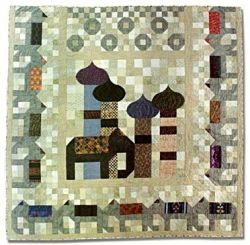
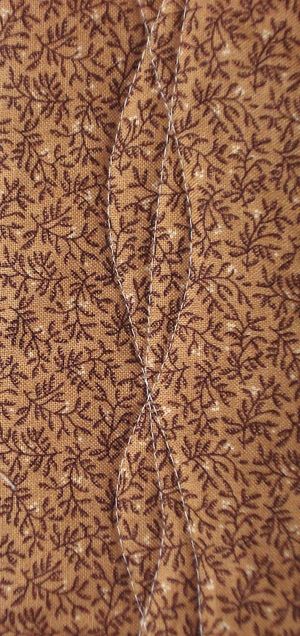
Keeping Things Even
I can't live without my walking foot, it keeps things from shifting.
- The walking foot allows even feeding of many layers, and can be used for simple quilting designs — even shallow curves.
- The walking foot is also handy for applying bindings to prevent 'creep' as you attach the binding.
Baby Elephant Walk is a queen sized quilt that was quilted and bound entirely with a walking foot, even the quilted cables and the curvy bits on some of the elephants' saddles.
Below is a free form cable pattern which I often use in long border areas of a quilt, and is what I used on those saddles.
I quilted the borders with a diagonal grid of wavy lines, instead of straight sewn lines. More interesting, and easy to manage.
You can learn how to use your walking foot on the page linked below.
Learn More
- What can you do with a 'walking' foot?
A 'walking' foot for your sewing machine is essential if you are a quiltmaker. This foot has its own feed dogs to move the top layer of fabric, while the machine's feed dogs move the bottom latyer
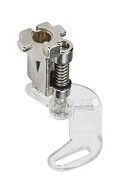
3-3. Free Machining Foot
Used for Design Quilting, and Stipple Quilting
This foot is used for design quilting, and can be used with the feed dogs dropped or covered, although the ideal is to have the feed dogs down.
Some free machine feet, also called free motion feet, have a clear base so you can see the work, while some have horseshoe shaped metal bases.
There are several different styles of free machining or darning feet available, even for the one machine!
You select the one that works best for you.
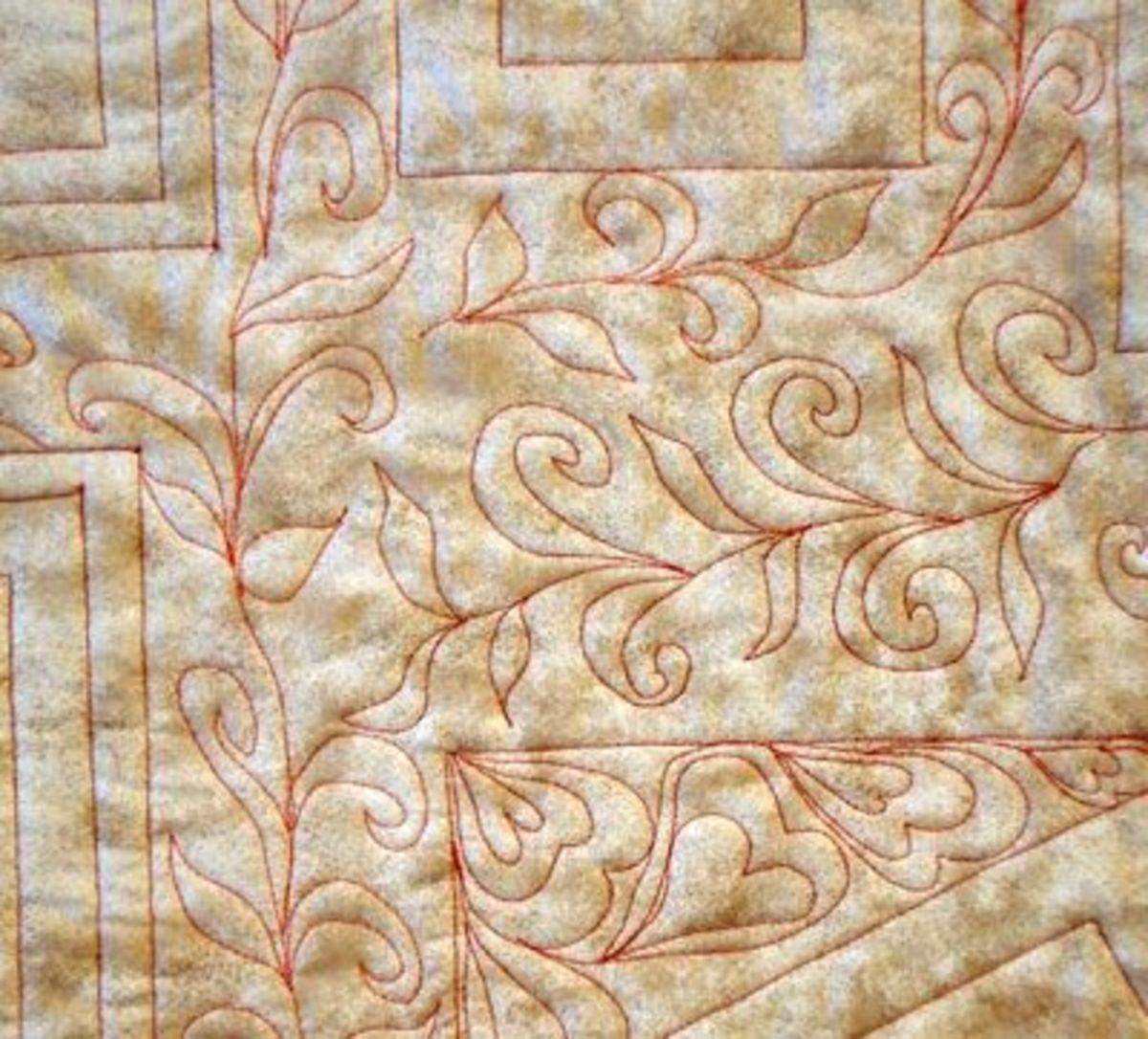
Features of a Free Machining Foot
- a tiny 'hoop' at the base which connects with the fabric each time the needle penetrates
- a spring or spring-like device to make it bounce back after the needle lifts
- an arm which sits over the needle clamp, so it goes up and down with the needle
Stippling made easy with garnet stitch
- What is stipple quilting?
Let Jan T show you her best tips for getting great results when free machine quilting. It's not hard at all.
Throat Size on Patchwork and Quilting Machines
Does it Matter?
Let's talk about the ideal throat size.
Some of the newer machines are sixteen inches from needle to neck.
Wow! I can't afford to buy such a wonder at over $7000.
It is possible to quilt large quilts on a domestic sewing machine.
I do it all the time on my beloved Bernina ® 440QE. I don't waste time 'packing' or folding the quilt, I just do it.
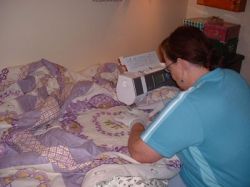
Use an Extension Table When Quilting
It Provides More Working Area
What makes my Bernina work even though it has a normal size throat?
I have an extension table that clips onto the machine bed, making a larger flat area for me to manipulate the quilt as I work.
There are many slide on tables available for sewing machines to make the workspace area much wider (and flatter).
There is a table for almost any brand and model of sewing machine.
In the photo I'm quilting on a Singer® machine, with a table attached, at a show when I was their Australian quilting consultant.
To Sum Up
For Patchwork and Quilting:
These are the features you need to look for in your new sewing machine:
- the capability to stop with the needle down
- be able to drop the feed dogs
- to have available the three essential feet:
- a ¼ inch patchwork foot (preferably with a flange)
- a walking foot and
- a free machining foot
- a wide attachable flatbed table
- wonderful, but not essential: a wide throat
